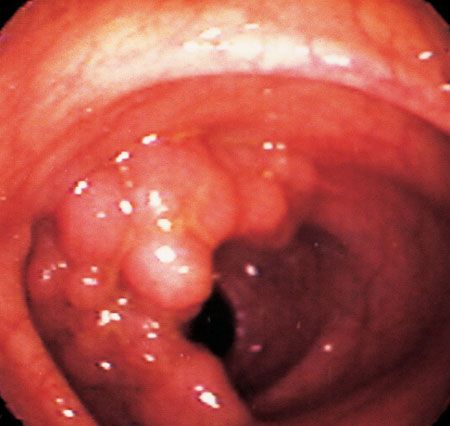- Clinical Technology
- Adult Immunization
- Hepatology
- Pediatric Immunization
- Screening
- Psychiatry
- Allergy
- Women's Health
- Cardiology
- Pediatrics
- Dermatology
- Endocrinology
- Pain Management
- Gastroenterology
- Infectious Disease
- Obesity Medicine
- Rheumatology
- Nephrology
- Neurology
- Pulmonology
Villous Adenoma in a 61-Year-Old Man
Endoscopic evaluation of a 61-year-old man hospitalized with a 4-month history of rectal bleeding, mucus discharge, and change in bowel habits revealed this large, sessile villous adenoma.
Endoscopic evaluation of a 61-year-old man hospitalized with a 4-month history of rectal bleeding, mucus discharge, and change in bowel habits revealed this large, sessile villous adenoma. The lesion occupied half the circumference of the bowel wall in the distal sigmoid colon, 25 cm from the anal verge. Examination of biopsy specimens showed benign villoglandular adenoma with atypia, with no invasive carcinoma. Sigmoid resection was carried out, and the patient recovered well.
Villous adenomas are more likely to progress to carcinoma than are simple tubular adenomas of the same size. Extremely large adenomas can result in electrolyte imbalance because of the large amount of mucus secreted. These lesions are usually very soft-almost gelatinous-and frondlike; hence the term “villous.” Because of their velvety texture, they can easily be missed on rectal examination if they occur in the distal rectum. Proctosigmoidoscopy can help clinch the diagnosis.
Villous adenomas in the distal rectum can be removed by transanal excision. When they occur in the proximal colon, colon resection is generally required.

